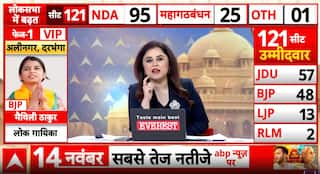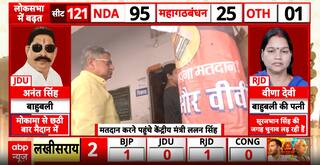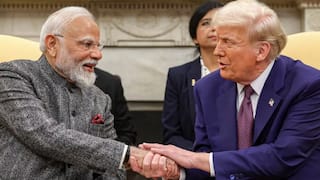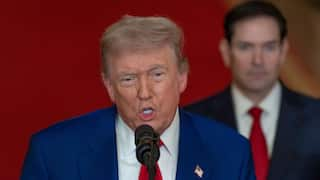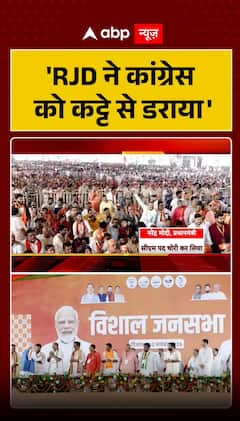Inflation: What Is Inflation? What Are The Ways To Control It? How It Impacts Economy? Explained
As per latest data from the NSO, India's CPI inflation eased to a four-month low of 5.09 per cent in February from 5.10 per cent in January 2024
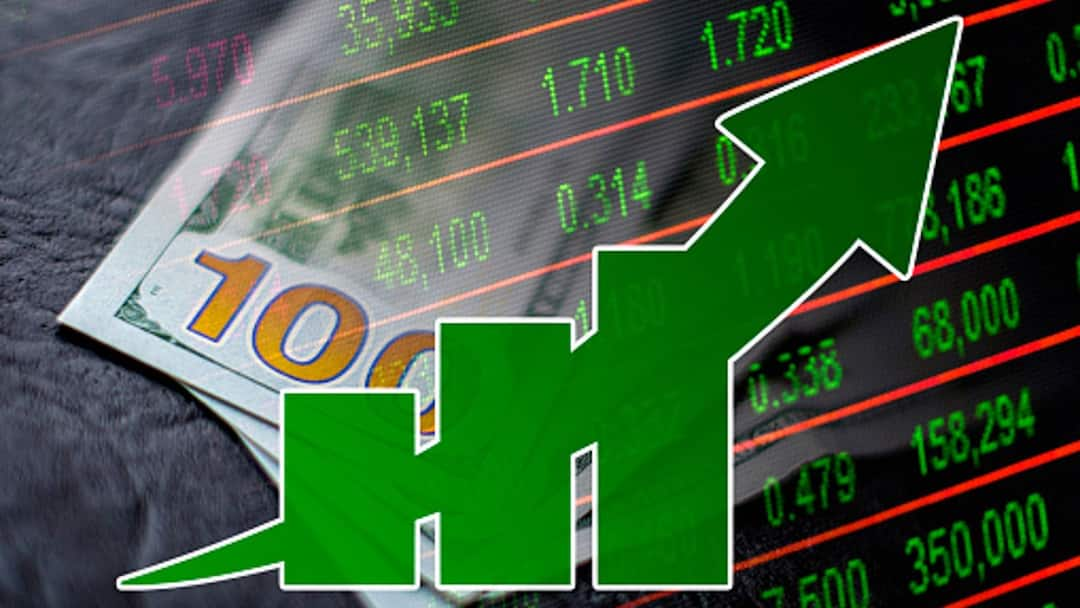
India's retail inflation, which is measured by the Consumer Price Index (CPI), eased to a four-month low of 5.09 per cent in February from 5.10 per cent in January 2024, as per the latest data from the Ministry Of Statistics and Programme Implementation. On the other hand, the Wholesale Price Index (WPI), which measures the wholesale prices of goods before they reach the retail level, dropped to 0.2 per cent in Februaru from the previous month's 0.27 per cent.
The Reserve Bank of India (RBI), which has been tasked by the government to ensure retail inflation remains at 4 per cent with a margin of 2 per cent on either side, forecast that consumer price inflation (CPI) will stand at 5 per cent for the first quarter of FY25, 4 per cent for the second quarter, 4.6 per cent for the third quarter, while 4.7 per cent for the fourth quarter. The projected real GDP growth for the period is 6.5 per cent, with the first quarter expected to reach 8.0 per cent. Additionally, the central bank anticipates a 7 per cent real GDP growth for the fiscal year 2024-25.
What is Inflation?
When there is an increase in the price level of a diversified set of products and services over a period of time within an economy, it is marked as Inflation. When the general price rises, the purchasing power per unit of money for goods and services also declines. The decrease in purchasing power negatively affects the standard of living for the general population, consequently causing a slowdown in economic expansion.
It's typically measured through various methods, with the Consumer Price Index (CPI) and Wholesale Price Index (WPI) being the most commonly used methods:
Consumer Price Index (CPI)
It serves as a key indicator of inflation, tracking fluctuations in the typical retail costs incurred by consumers for a range of goods and services across time.
The base year of CPI is 2012 and its data is used by the Monetary Policy Committee to contain inflation.
It is further categorised into the specific group- CPI for Industrial Workers (CPI-IW), CPI for Agricultural Laborers (CPI-AL), CPI for Rural Laborers (CPI-RL), and CPI for Urban Non-Manual Employees (CPI-UNME).
Wholesale Price Index (WPI)
It assesses the average change in wholesale-level prices of goods, representing the viewpoint of producers and businesses. This encompasses a wider range of goods compared to the Consumer Price Index (CPI). And, its base year is 2011-12.
Let's Delve Into The Factors Contributing To Inflation And How It Impacts Economy:
- Demand-Pull Inflation: This inflation occurs when aggregate demand surpasses aggregate supply, leading to an increase in prices. In India, rapid urbanisation, rising income levels, and increasing consumer spending contribute to demand-pull inflation. As people have more disposable income, they tend to spend more on goods and services, thus driving up prices.
- Cost-Push Inflation: This occurs when the costs of production increase, which leads producers to pass on these higher costs to consumers in the form of higher prices. Factors such as rising wages, increased taxes, and higher import prices can result in cost-push inflation in India.
- Food Inflation: This is particularly relevant in a country where a significant portion of income is spent on food and can have a substantial impact. Factors such as poor monsoons, supply chain disruptions, and government policies affecting food distribution and prices can lead to spikes in food inflation.
- Supply shocks: These occur when there's an abrupt and unforeseen disturbance to the availability of products and services. Instances like natural calamities, geopolitical occurrences, or unexpected events can result in a decrease in supply, consequently driving prices upward.
- Fuel Price Inflation: Given India's dependence on imported crude oil, fluctuations in global oil prices can significantly impact domestic fuel prices. A rise in fuel prices can have cascading effects on transportation costs, production costs, and ultimately, consumer prices.
- Monetary Policy: The RBI accomplishes monetary policy measures to control inflation. By adjusting interest rates, open market operations, and reserve requirements, the RBI aims to manage inflation within a target range. Tightening monetary policy (raising interest rates) is frequently used to combat inflation by reducing aggregate demand.
- Fiscal Policy: Government spending and taxation policies also play a significant role in influencing inflation. Increased government spending financed through borrowing or money creation can infuse inflationary pressures. Similarly, changes in taxation can also impact disposable income and consumer spending, affecting inflation dynamics.
- Exchange Rates: Variations in exchange rates can impact the prices of imported goods and commodities. A depreciation of the domestic currency can lead to higher import prices, contributing to inflationary pressures.
ALSO READ | What Is TDS And How Does It Affect Your Salary? EXPLAINED
Inflation In India Has Significant Implications For Various Stakeholders:
- Consumers: Inflation erodes the purchasing power of money, leading to a decrease in real incomes. This can particularly affect low-income households, who spend a larger portion of their income on essentials like food and fuel.
- Businesses: Persistent inflation can ruin business planning and investment decisions. Uncertainty over future prices can lead to higher costs of production and reduced profitability.
- Government: High inflation rates can undermine economic stability and social welfare programs. The government often faces pressure to take corrective measures to control inflation while balancing other policy objectives such as economic growth and employment.
- Investors: Inflation can affect investment decisions by influencing interest rates, asset prices, and returns on investment.
Impacts of Rising Inflation:
- It dampens the purchasing power of money, where, in the same amount of money, individuals tend to buy a few goods and services which can reduce their savings.
- Central banks frequently react to inflation by raising interest rates. This action has the potential to raise borrowing costs for both businesses and individuals, which could in turn decelerate investment and economic growth.
- In some instances, inflation may prompt investors to engage in speculative activities within financial markets, aiming to find assets capable of delivering returns surpassing the inflation rate. Such behavior can foster the emergence of asset price bubbles.
- Consistent and high inflation can have an impact on society and politics. It may lead to public dissatisfaction, protests, and demands for wage increases.
Advantages:
- Inflation enables employees and workers to access higher incomes. As inflation erodes the purchasing power of individuals, it also provides an opportunity for them to raise their incomes to keep pace with the inflation rate.
- On the other hand, a moderate inflation rate diminishes the real value of debt. Conversely, deflation increases the real burden of debt, putting pressure on disposable incomes.
- Moderate inflation rates facilitate price adjustments, allowing goods to achieve their true value.
- Similarly, Inflation suggests that the economy is progressing and expanding. It signifies that the economy aims to alleviate involuntary unemployment. The mitigation of unemployment stands a better chance of success with the maintenance of a moderate inflation rate.
- This typically indicates a robust economy. Economic expansion usually accompanies a certain level of inflation.
Disadvantages:
- The rise of inflation often breeds uncertainty and confusion, resulting in decreased investment. It is suggested that nations experiencing prolonged periods of high inflation typically exhibit reduced rates of investment and slower economic growth.
- Higher inflation results in reduced global competitiveness, which subsequently results in decreased export volumes and a decline in the current account balance of payments.
- Inflation has the potential to diminish the actual worth of savings, posing a significant impact on old people relying on their savings. Yet, the extent of this impact relies on whether interest rates surpass the inflation rate.
- Rising inflation will reduce the actual worth of government bonds, leading investors to seek higher yields to offset this effect. Consequently, the expense of debt interest payments will escalate.
- Hyperinflation has the potential to devastate an economy. When inflation goes out of control, it sets off a vicious cycle where rising inflation, causes higher inflation expectations, pushing prices even higher. This phenomenon of hyperinflation poses a significant threat to the savings of middle-class individuals, resulting in a redistribution of wealth and income favoring those holding debt, assets, and property.
Ways To Control Inflation
- The pivotal role of managing inflation in India is undertaken by the RBI. This is achieved primarily through the implementation of monetary policy tools, wherein the RBI adjusts interest rates like the repo rate to regulate the flow of money and credit within the economy.
- The government employs fiscal policies such as taxation and public spending to regulate inflation. Implementing suitable fiscal measures can aid in restraining demand and managing inflationary forces. Higher taxes can diminish disposable income, thereby restraining expenditure and inflation.
- Food prices frequently play a substantial role in driving inflation in India, the government introduces a range of initiatives to regulate food availability and pricing. Eg:- MSP and PDS
- The government administers trade policies, encompassing both import and export regulations, to impact the availability of goods and regulate price levels. Curbing certain imports or exports may be imposed to stabilise domestic markets.
- Enhancing financial inclusion via initiatives such as the Pradhan Mantri Jan Dhan Yojana has the potential to direct savings into the formal banking sector. By doing so, it can mitigate inflationary pressures by offering a stable source of funds for investment.











